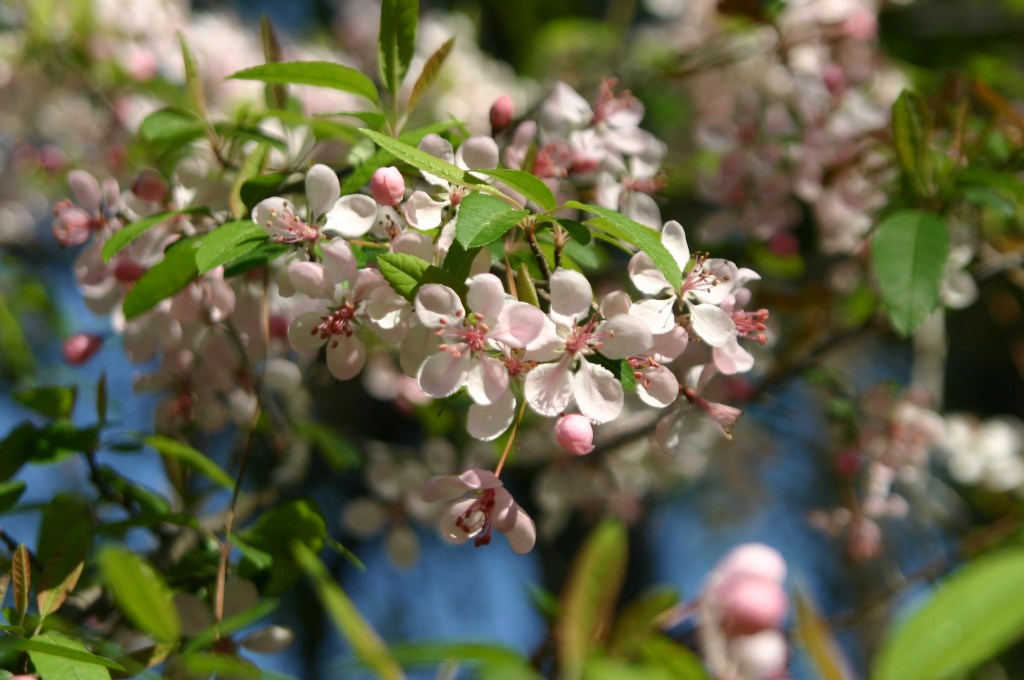Mississippi native plants for winter wildlife
Published 3:00 pm Friday, February 2, 2018

- Several Southern crabapples are growing at the Arboretum’s south gate on Ridge Road. Their pink blossoms are known to attract a wide range of species of wildlife.
By Patricia R. Drackett, Director and Assistant Extension Professor of Landscape Architecture at The Crosby Arboretum, Mississippi State University Extension Service.
Are you acquainted with the native plants in your yard that have a high value to local critters? While we often think of the nuts, seeds, and berries of native shrubs and trees providing wildlife food, keep in mind that tasty meals also come in the form of insects that munch on leaves or other plant parts and are protein-rich meals, especially for fledgling birds. On a walk along the Arboretum’s pathways you will see a number of plants favored by local wildlife. Use these plants in your own landscape’s wildlife garden!
Take a look at the MSU Extension Publication 2402,”Establishing a Backyard Wildlife Habitat”, which is available on the new Smart Landscapes website at http://extension.msstate.edu/smartlandscapes under the menu heading “Places for Wildlife”. The publication contains many lists of plants, native and non-native, that will attract birds, hummingbirds, butterflies, pollinators, and other wildlife to your yard.
Native trees at the Arboretum with a high value for wildlife include mayhaw, parsley hawthorn, American holly, Southern magnolia, wax myrtle, Southern crabapple, black gum, longleaf pine, persimmon, and numerous species of oaks. Shrubs include American beautyberry, buttonbush, fringe tree (Grancy gray beard), “huckleberries” such as Elliott’s blueberry and dwarf blueberry (Vaccinium darrowii), and numerous species of holly (Ilex) and Viburnum. For more information, research these plants in the Crosby Arboretum’s Native Plant Data Base, linked from our homepage at http://crosbyarboretum.msstate.edu/
Southern crabapple produces small yellow and red fruit that attract a wide variety of wildlife including deer, fox, raccoons, turkeys, and squirrels. But you may like to grow it simply because it is a beautiful spring-flowering specimen tree. More blooms, and fruit, are produced when located in full sun, but it will also take some shade. It grows naturally in fields and thickets and on moist, well-drained stream banks. Birds will build their nests among the thorny branches for protection from predators. Like mayhaw, the fruit may be used to make jelly.
The bluish gray waxy berries found on wax myrtle can be a stunning sight. While the common shrub rarely turns heads, it has been known to do so when laden with fruit during the winter months. Both the berries and leaves yield a delightful bayberry fragrance, prompting stories from visitors who occasionally relate a story of a family member who crushed wax myrtle branches to lay under the porch and keep away fleas from their dogs, or rubbing the crushed leaves on their skin to repel mosquitoes.
Southern wax myrtle (Morella cerifera) will grow in both wet and dry conditions, and tolerates compacted soils, salt spray, and flooding. The seeds are dispersed by birds, and around fifty species are known to consume the berries, particularly wild turkey and bobwhite quail. Birds’ digestive systems remove the wax from the fruit, necessary for germination. Young wax myrtle seedlings will pop up unexpectedly in many places, and are easily transplanted. The plant can be pruned for denser growth, and is a great addition to a wildlife garden or used to create a screen at a property line. It will also provide cover for nesting birds. Another common “edge” species for wildlife is the evergreen yaupon holly (Ilex vomitoria). Female yaupon shrubs have attractive red berries in winter. Yaupon is sometimes confused with the invasive shrub called privet. However, it is easy to tell the difference between the two plants by touch. Yaupon holly limbs are stiffer and generally shorter, while privet has a lankier, soft, sprawling form.
FOR FURTHER EXPLORATION: See Publication 2330, Native Trees for Mississippi Landscapes, and Publication 2334, Native Shrubs for Mississippi Landscapes, available on the Mississippi State University Extension Service website at http://extension.msstate.edu/.
Prescribed fire demonstrations are potentially available at the Arboretum on Thursdays and Fridays from 10:00 a.m. to 2:00 p.m. through February, weather permitting. If you are interested, call the office at 601-799-2311 by 9:00 a.m. on the day you would like to attend to confirm the event will be proceeding and you may observe at a safe distance. Admission is free for members and $5 for non-members. Persons under the age of 18 must be accompanied by an adult.
The Crosby Arboretum is located in Picayune, I-59 Exit 4, at 370 Ridge Road and is open Wednesday through Sunday from 9 AM to 5 PM.
For more information, see our schedule of events on our website at www.crosbyarboretum.msstate.edu.

